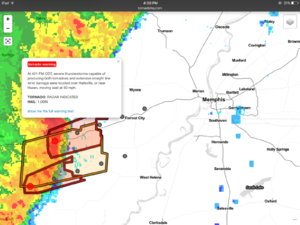Drew.Gardonia
I've noticed every set of storms we've had here in Tennessee have gone linear (squall line) after crossing the Mississippi River. anyone have any thoughts on this as to why? Our first set of storms rolled through on 2-23-2011. A friend in Memphis said there was intense CG lightning all over the place. when the storms reached Nashville, there was hardly any lightning at all, and we did have sirens and 2 confirmed tornadoes in the area, but it seemed like the storms lost a lot of their intensity after crossing the Mississippi and working their way east towards Nashville. None of the storms that we have had here in Mid TN have produced very much lightning either which is really strange. I'd like to hear some thoughts and opinions as to why these storms on why they are going linear, why they aren't as intense after the cross the Mississippi and why they aren't producing a lot of lightning.

